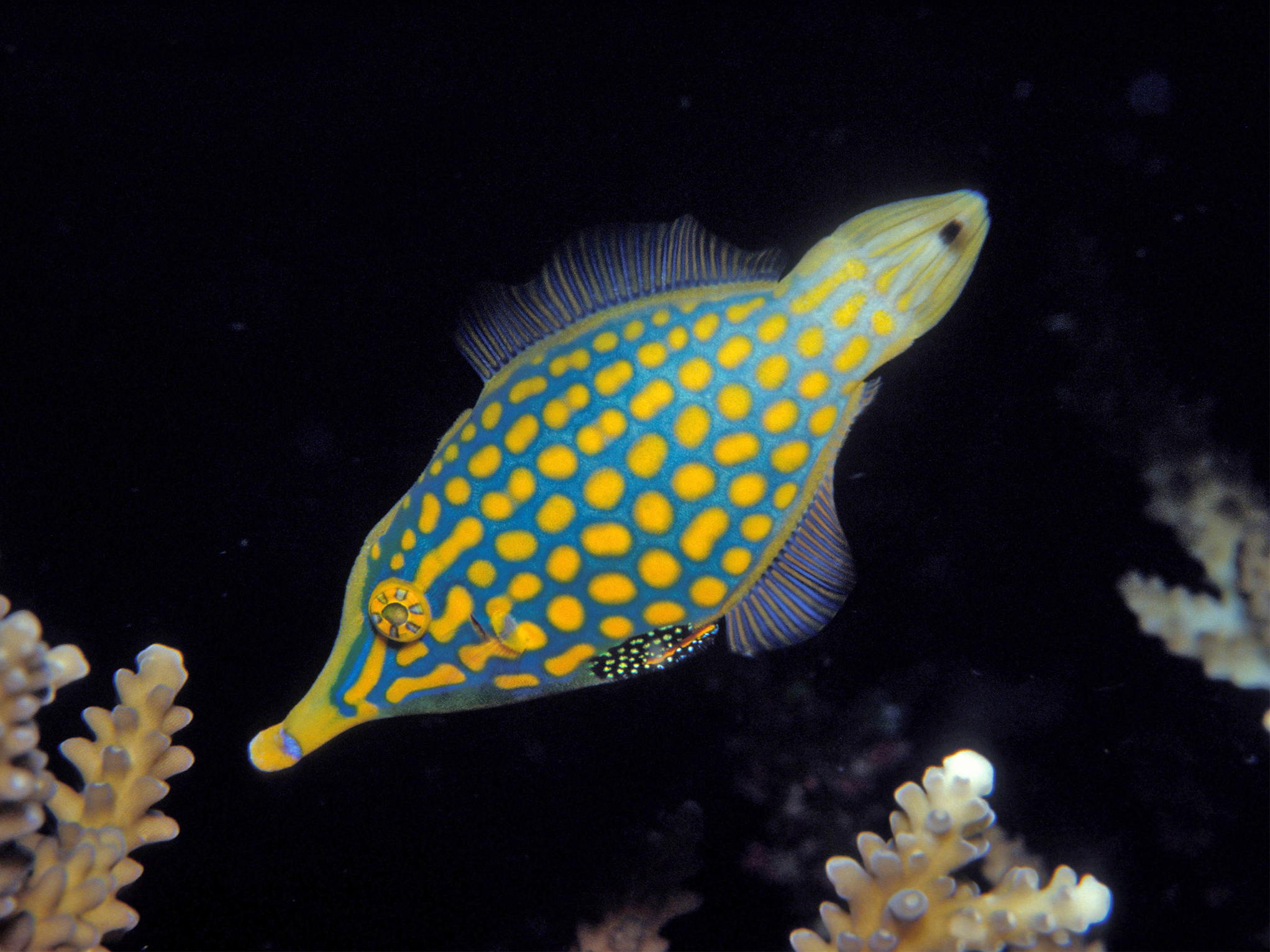Fish discovered camouflaging itself with smell
The harlequin filefish is the first vertebrate discovered using the trick

Your support helps us to tell the story
From reproductive rights to climate change to Big Tech, The Independent is on the ground when the story is developing. Whether it's investigating the financials of Elon Musk's pro-Trump PAC or producing our latest documentary, 'The A Word', which shines a light on the American women fighting for reproductive rights, we know how important it is to parse out the facts from the messaging.
At such a critical moment in US history, we need reporters on the ground. Your donation allows us to keep sending journalists to speak to both sides of the story.
The Independent is trusted by Americans across the entire political spectrum. And unlike many other quality news outlets, we choose not to lock Americans out of our reporting and analysis with paywalls. We believe quality journalism should be available to everyone, paid for by those who can afford it.
Your support makes all the difference.Blending into the background by way of visual camouflage is pretty old hat by this stage with animals rendered more or less invisible to predators by a vast array of fur coats, feathers, shells and skins.
But nasal camouflage, the practice of disguising yourself against the enemy by smelling like something of far less interest, is uncharted territory.
That may be about to change, however, after new research discovered that the harlequin filefish adopts the smell of the coral it eats in order to hide from predators – raising the prospect that the survival technique could be widespread among all manner of animals.
Until now, smell-based disguises were only known to exist in a handful of smaller invertebrates, but this is the first time it’s has been located in a larger vertebrate species.
“For many animals vision is less important than their sense of smell,” said lead author Dr Rohan Brooker, from James Cook University in Australia.
“Because predators rely on odours to find their prey, even visually camouflaged animals may stick out like a sore thumb if they smell strongly of ‘food’. By feeding on corals, the harlequin filefish ends up smelling enough like its food that predators have a hard time distinguishing it from the surrounding coral habitat,” Dr Brooker added.
“This is very exciting because it opens the possibility of a wide range of different animals also using similar mechanisms, right under our noses,” he said.
The filefish matches the colour of the coral so closely that small crabs, which lived on the coral branches, couldn’t distinguish it from the coral.
However, their cover is blown if it shelters in a different species of coral than the one it has been eating, the report cautions.
Join our commenting forum
Join thought-provoking conversations, follow other Independent readers and see their replies
Comments